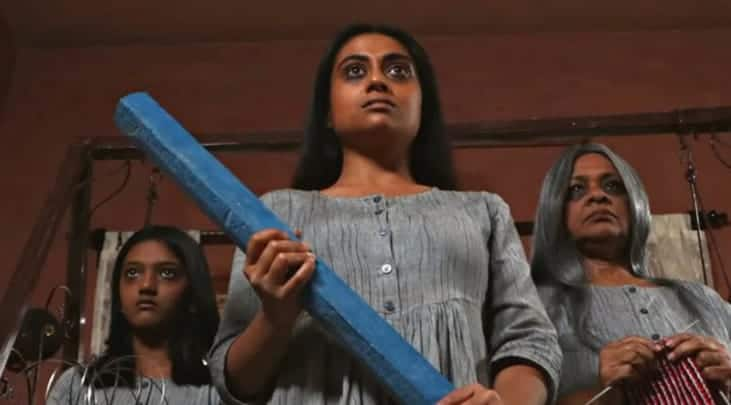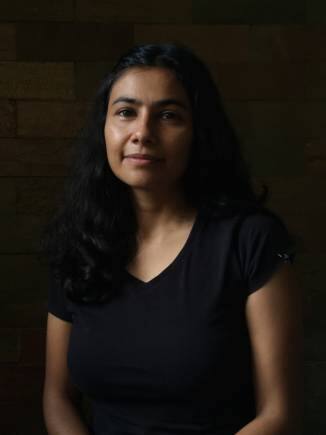



Sarmistha Maiti and Rajdeep Paul had one solution to address their fears of a raging coronavirus health emergency — make a movie. Trained filmmakers from the Satyajit Ray Film & Television Institute (SRFTI), Kolkata, Maiti and Paul plunged into the depths of the pandemic with their camera to capture the essence of life and death.
Far away in Uttarakhand, Srishti Lakhera was grappling with a similar threat consuming the peace and quiet of a tiny village in the Himalayan foothills, long before the pandemic. A documentary filmmaker, she was determined to get to the bottom of the endless flight of its residents to cities, emptying its homes and turning it into a ghost village.
Maiti and Paul's feature film Kalkokkho (House of Time) and Lakhera's documentary Ek Tha Gaon (Once Upon a Village) bagged major prizes at the 69th National Film Awards presented by President Droupadi Murmu on October 17. Kalkokkho won the National Award for Best Feature Film in Bengali and Ek Tha Gaon picked up the Best Non-Feature Film prize and Best Audiography award.
Dealing with the existential crisis in a pandemic-hit city and an urban migration-affected rural village, Kalkokkho and Ek Tha Gaon stood out for their aesthetic exploration of the impact on life, both human and non-human. Space and time diverge with bodies and minds and the environment as both movies pace their artistic endeavours in slow moving frames.
"The pandemic was a situation of existential horror," says the Kolkata-based Maiti about the point of departure for Kalkokkho. "The feeling of mortality became an important source of the movie and the challenge was combating the fear of death," adds Paul referring to their own fear of staying alive to complete the film. "It was a fear of the unknown."
 A still from Kalkokkho.
A still from Kalkokkho.Kalkokkho tells the story of a young woman kidnapping a doctor to save her elderly father and two aunts. Shot entirely inside a house, the 125-minute-long film feeds on the woman's paranoia. The grey tone of the movie, reflecting the flight of colour from the country, heightens the tension.
"I think the language of the film follows the content, which dictates the form. It is also experimental," says Paul, who graduated in direction and writing from SRFTI a decade ago. Maiti was at the institute at the same time studying editing. They began collaborating on the campus, first for their diploma film. The partnership borne out of fraternity continued outside the college, creating such works as their 2013 documentary, At The Crossroads, the biography of a percussionist in Kolkata.
 Kalkokkho directors Sarmistha Maiti and Rajdeep Paul.
Kalkokkho directors Sarmistha Maiti and Rajdeep Paul.Kalkokkho is Maiti and Paul's first feature film. It wouldn't have been if the pandemic hadn't arrived. "We were working on our first feature, Mindflies (Mon Potongo), when the janta curfew was imposed on March 20, 2020. The film was about the street people of Kolkata, those who live on the street and contribute to the society as household helpers and rickshaw drivers in the city. It was to be shot on the pavement of Kolkata," says Maiti.
Instead, Maiti and Paul, now stuck inside their homes in Kolkata, decided to work on a story surrounding the pandemic and people's worries. They completed a script and sent it to Anjan Bose of Aurora Film Corporation, who had produced their short film, Kayantar (Metamorphosis) earlier. The Indian Express reported in 2021 that the Kolkata-based 117-year-old Aurora Film Corporation’s legacy includes producing and distributing films like Satyajit Ray’s Aparajito (1956) and Jalsaghar (1958), distributing Pather Panchali (1955), Ritwik Ghatak’s Ajantrik (1958), producing the first Bengali film shot abroad Bhogini Nibedita (1960), producing shows like Derek O’Brien’s Cadbury Bournvita Quiz Contest in the ’70s. The studio/production house wants to bankroll “Bengali new wave” and home-bred fresh talents (from FTII, SRFTI, etc.).
"Anjan Bose called back within 15 minutes saying he would do the film," beams Maiti. Kalkokkho was shot inside a house in Nayabad area of East Kolkata in 14 days. Tannistha Biswas, who had auditioned for Mindflies, was cast as the main protagonist. Maiti and Paul would go on to shoot Mindflies after the pandemic.
The filmmakers deftly employ the tool of time loop to reflect the state of the society frozen in time by the virus. "The day was repeating itself everyday," says Maiti. "There was no Monday or Tuesday or Wednesday. It was all the same," she adds. The lack of feeling of time became the film's title, House of Time.
 Documentary filmmaker Srishti Lakhera.
Documentary filmmaker Srishti Lakhera.For Lakhera, it was the exodus of people to cities from a rural village in Uttarakhand that prompted Ek Tha Gaon, her debut film she produced with her core team Bhamati Sivapalan, the film's editor and co-producer, and cinematographer Amith Surendran.
Ek Tha Gaon explores life in Semla village in Tehri district, one of the many reduced to 'ghost villages' in Uttarakhand because of urban migration. Semla was where Lakhera's father grew up. "In 2015 I started researching on migration in Uttarakhand," says Lakhera, who studied filmmaking under independent filmmaker and Film and Television Institute of India, Pune alumnus Kavita Joshi and later did a one-year course in documentary filmmaking in the United States.
"I found that only seven people had remained in my father's village. I was curious to know what is happening," says Lakhera, who grew up in Rishikesh. "So many villages were becoming empty as people had started moving to cities within Uttarakhand and outside."
 A still from Ek Tha Gaon (Once Upon A Village), set in Semla, a ghost village in Uttarakhand.
A still from Ek Tha Gaon (Once Upon A Village), set in Semla, a ghost village in Uttarakhand.When Lakhera went to Semla, she met an 80 year-old woman. "Leela Devi was living alone in a 100-year-old stone house. She was a great storyteller. Her way of words was magical. She could poetically pull you back to a different world," says Lakhera. Devi became her main character. Golu, the film's other protagonist, is a 19-year-old girl who dreams of leaving the village to study and get a job in a city.
Shot in Garhwali and Hindi, Ek Tha Gaon focuses on the people left behind from urban migration that is impacting life and environment in the Himalayan villages. "Less and less people are farming now and taking care of their land. Leela Devi was a proud farmer. That is where her identity came from. Suddenly she was living in a village where nobody was growing anything. Her farmlands are empty, her cattle sheds are empty, so is her house. She was abandoned," says the director, who directed an episode (The Women Of Chamoli, India: Defending Their Home From Ecological Collapse) of The Last Defenders series about women defending the planet for Singapore's Channel NewsAsia network.
Like Lakhera's nostalgia that pulled her to her father's village, her main character was immersed in a state of frozen time, like Maiti and Paul's characters in Kalkokkho. It didn't matter for Devi which day of the week it was though there was no pandemic. Her fear became the loss of her world, something she began connecting with magically. A world where she talked to the trees, birds and wild animals.
"We wanted the audience to feel a sense of the pace of the place, how to live in an empty village," says Lakhera about the one-hour-long film shot using the camera on tripods to hold time and stillness. "There wasn't much happening here. One could sit down and watch the clouds move and birds fly past. For someone visiting from a city, it is beautiful. For someone in the village with a lack of choice to move out, the feeling is different," she adds. "The mundane became melancholy."
Discover the latest Business News, Sensex, and Nifty updates. Obtain Personal Finance insights, tax queries, and expert opinions on Moneycontrol or download the Moneycontrol App to stay updated!
Find the best of Al News in one place, specially curated for you every weekend.
Stay on top of the latest tech trends and biggest startup news.